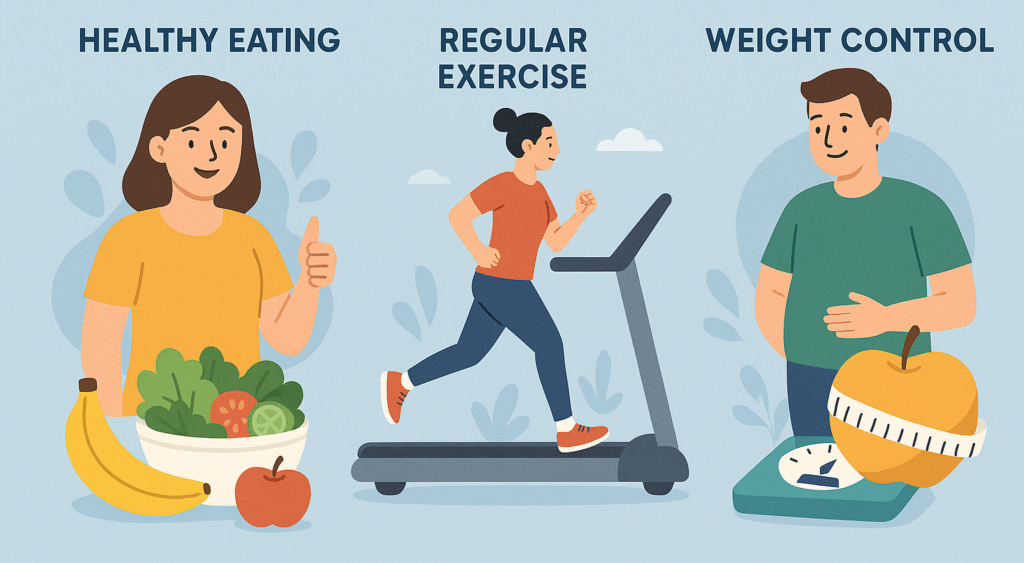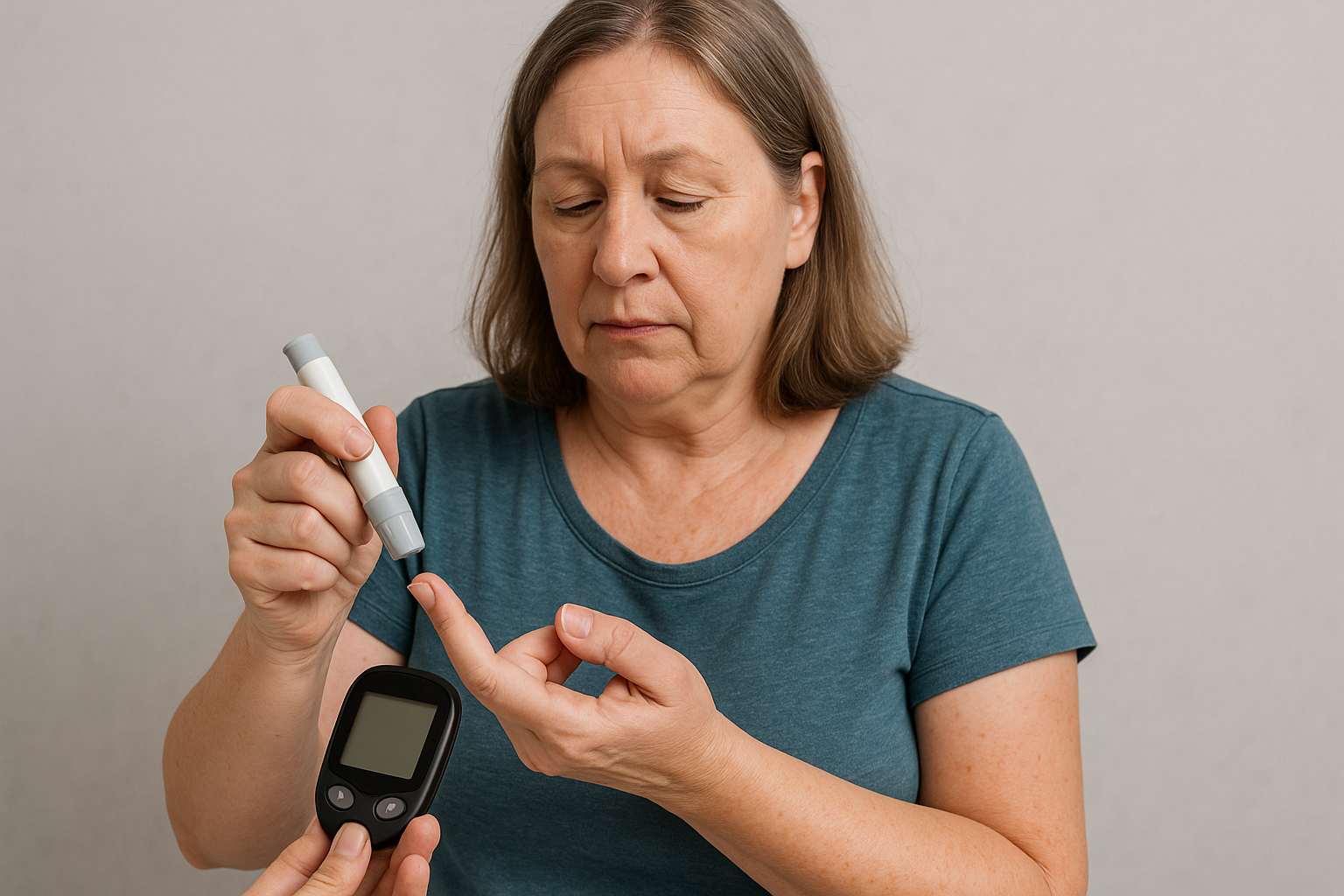Diabetes is a chronic condition where the body cannot properly manage blood sugar (glucose). This happens when the body does not produce enough insulin or cannot use it effectively. Without treatment, high blood sugar can damage the heart, kidneys, eyes, and nerves.
Type of Diabetes
There are three main types you should know:
- Type 1 Diabetes – An autoimmune condition where the body stops producing insulin. Usually diagnosed in children or young adults.
- Type 2 Diabetes – The most common type. The body either resists insulin or doesn’t produce enough. Often linked to lifestyle factors.
- Gestational Diabetes – Occurs during pregnancy and usually goes away after delivery but increases the risk of developing type 2 diabetes later.
Causes and Risk Factors
Your risk of getting diabetes is increases with:
- Family history of diabetes
- Being overweight or obese
- Sedentary lifestyle
- Poor diet high in sugar and processed foods
- High blood pressure or cholesterol
- Older age

Do I Have Diabetes? Recognizing the Signs
Common warning sign of diabetes include:
- Frequent urination
- Excessive thirst
- Increased hunger
- Unexplained weight loss
- Fatigue and weakness
- Blurred vision
- Slow-healing wounds
- Tingling or numbness in hands and feet
Having one or more of these symptoms does not confirm diabetes, but it should prompt a medical check-up.
How Diabetes is Diagnosed
Doctors use simple blood tests to confirm diabetes:
- Fasting Blood Sugar Test – Measures glucose after fasting overnight.
- HbA1c Test – Shows average blood sugar over the past 2–3 months.
- Oral Glucose Tolerance Test (OGTT) – Measures how the body handles sugar after a sweet drink.
Treatment and Management

Treatment of diabetes mainly focuses on lifestyle changes and controlling blood sugar. Treatment includes:
- Lifestyle changes: Healthy eating, regular exercise, and weight control.
- Medication: Pills like metformin for type 2 diabetes.
- Insulin therapy: Essential for type 1 diabetes and sometimes for type 2.
- Blood sugar monitoring: Checking levels daily to prevent complications.
When to See a Doctor
You should see a doctor if you notice:
- Several symptoms of diabetes at once.
- A family history of diabetes and new unexplained health changes.
- Persistent tiredness, frequent urination, or sudden vision problems.
Early diagnosis makes treatment easier and prevents long-term damage.
Preventing Type 2 Diabetes
Steps to lower your risk of having diabetes:
- Maintain a healthy weight
- Stay active with at least 30 minutes of exercise daily
- Eat more fruits, vegetables, and whole grains
- Limit sugary foods and drinks
- Go for regular health check-ups
If you’ve ever wondered whether you have diabetes or not, the best step is to recognise symptoms early and seek medical advice. With proper management, people with diabetes can live healthy and active lives.
Disclaimer: This article is for informational purposes only. It is not a substitute for professional medical advice, diagnosis, or treatment. Always consult a qualified healthcare provider with any health concerns.
Source:
You may also be interested in pneumonia


[…] You may also interested in Diabetes […]